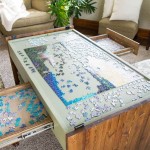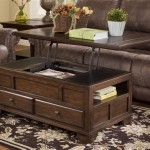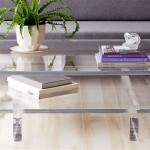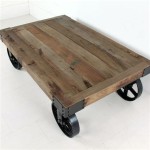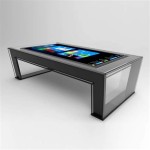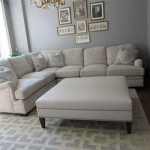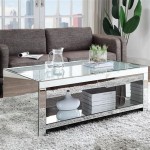Determining the Ideal Thickness for a Tempered Glass Table Top
Tempered glass, known for its strength and safety characteristics, is a popular material for table tops. Its resistance to breakage and ability to shatter into small, relatively harmless pieces make it a preferred choice over annealed glass, particularly in homes and public spaces. However, selecting the appropriate thickness for a tempered glass table top is crucial to ensure its structural integrity, longevity, and suitability for its intended use. This article will explore the factors influencing the optimal thickness of a tempered glass table top, providing a comprehensive guide for both consumers and professionals.
The thickness of a tempered glass table top directly impacts its load-bearing capacity, resistance to impact, and overall durability. A table top that is too thin may be susceptible to cracking, shattering, or excessive flexing under weight. Conversely, an overly thick table top may be unnecessarily heavy and expensive. Determining the appropriate thickness requires careful consideration of several factors, including the table's size, shape, intended use, support structure, and aesthetic preferences.
The most common unit used to measure glass thickness is millimeters (mm). While inches are sometimes used, particularly in the United States, millimeters provide a more precise and universally understood measurement. Typical thicknesses for tempered glass table tops range from 6mm (approximately 1/4 inch) to 19mm (approximately 3/4 inch) or even thicker for specialized applications. The specific application dictates the most suitable thickness within this range.
Size and Shape Considerations
The dimensions of a table top are primary determinants of the required glass thickness. Larger table tops necessitate thicker glass to prevent sagging or breakage under their own weight or when loaded with objects. The relationship between size and thickness is not linear; as the dimensions increase, the required thickness increases disproportionately. For example, a small side table top of 30cm x 30cm may be adequately supported with 6mm glass, while a large dining table top of 120cm x 240cm would likely require 12mm or thicker glass.
The shape of the table top also plays a role. Circular or oval table tops tend to distribute weight more evenly than rectangular or square table tops, potentially allowing for slightly thinner glass for a given size. Irregular shapes, with sharp corners or cantilevered sections, may require thicker glass to reinforce vulnerable areas and prevent stress concentrations. Custom shapes often need specialized assessment by a glass professional to determine the appropriate thickness.
The unsupported span, which is the distance between supporting elements, is a critical factor. A table top with a larger unsupported span will flex more under load, requiring thicker glass. If a table design features a wide gap between legs or a lack of a central support beam, a thicker glass top is essential to prevent bowing or breakage. Conversely, a table with a solid, continuous support structure underneath the glass can often utilize a thinner glass top.
Intended Use and Load Requirements
The intended use of the table is a key consideration in determining the appropriate glass thickness. A purely decorative table, such as a console table intended for displaying lightweight objects, may require thinner glass than a dining table that will frequently bear the weight of dishes, serving platters, and seated individuals. Similarly, a coffee table that is likely to be used for placing books, remote controls, and beverages will need to be thicker than a small accent table used solely for displaying a vase of flowers.
Understanding the typical load that the table top will bear is crucial. This involves estimating the maximum weight that will be placed on the table at any given time. For dining tables, this should account for the weight of a fully set table, including plates, glasses, cutlery, serving dishes, and the occasional heavier item like a centerpiece or hot pot. For office desks, the load should include computers, monitors, documents, and other office supplies. Accurately estimating the load helps in selecting a glass thickness that can safely withstand the anticipated weight.
Consideration should also be given to the potential for impact. Tables used in high-traffic areas or environments where accidental impacts are more likely, such as homes with young children or pets, should have thicker glass to resist chipping or shattering. The thicker the glass, the greater its resistance to impact and the lower the risk of breakage due to accidental bumps or dropped objects.
Support Structure and Edge Treatment
The type and quality of the support structure beneath the glass table top significantly influence the required thickness. A solid, continuous support structure, such as a wooden or metal platform, distributes weight evenly across the entire surface of the glass, allowing for a thinner glass top to be used. Conversely, a table with only a few widely spaced legs provides minimal support, necessitating a thicker glass top to compensate for the increased unsupported span.
The materials used for the support structure also matter. A rigid support made of steel or solid wood provides better weight distribution and reduces flexing compared to a more flexible support made of lightweight materials. The design of the support structure should also minimize sharp edges or protrusions that could create stress points on the glass.
The edge treatment of the glass also affects its strength and durability. Polished edges, which are smooth and rounded, are less prone to chipping and cracking than rough or sharp edges. Beveled edges, which are angled and polished, provide an additional layer of protection against damage. Properly finished edges reduce the risk of stress concentrations and improve the overall aesthetic appeal of the table top. Also, choosing between flat polished edges and pencil polished edges will have a visual impact, but for structural integrity both are acceptable. A flat polished edge is exactly that, with a flat surface and a small chamfer to remove the sharp edge. A pencil polished edge has a slightly rounded or curved finish.
In summary, determining the appropriate thickness for a tempered glass table top involves a comprehensive assessment of several factors. The size and shape of the table, the intended use and load requirements, and the type and quality of the support structure all play crucial roles in ensuring the table's structural integrity and longevity. Consulting with a qualified glass professional is recommended, particularly for custom designs or unusual applications, to ensure that the selected glass thickness is adequate for the intended purpose.

Table Top Tempered Glass

Tempered Glass Thickness Standard Optimal Size

Fab Glass And Mirror 32 In X 60 Clear Rectangle Table Top 3 8 Thick Flat Edge Polished Tempered Radius Corner T 32x60rec10thf The Home Depot

Buy Glass Table Top Square Clear Tempered Beveled Polished Edges 12mm Thickness

Bespoke Toughened Glass Table Tops The Warehouse

20 X 24 Rectangle Glass Table Tops

1 2 Inch Thick Clear Tempered Round Glass Table Top With Flat Polished Edge

Fab Glass And Mirror 30 In Clear Square Table Top 1 2 Thick Bevel Polish Tempered Radius Corners 30sqr12thbean The Home Depot

What Is The Best Type Of Glass For Table Tops West

Fab Glass And Mirror 24 In X 48 Clear Rectangle Table Top 1 2 Thick Flat Edge Polished Tempered Radius Corners 24x48rect12thfl The Home Depot
Related Posts

